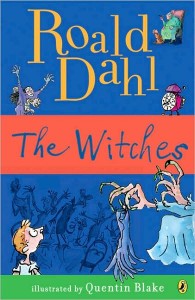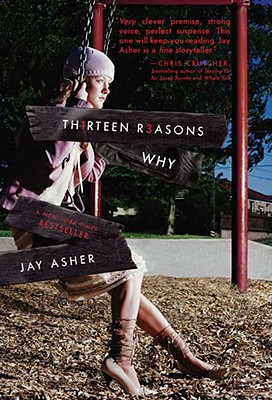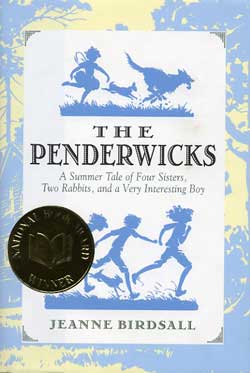 I don’t normally review picture books, but I wrote this one for school. This is one of my all-time favorite picture books – it’s so much fun for storytime.
I don’t normally review picture books, but I wrote this one for school. This is one of my all-time favorite picture books – it’s so much fun for storytime.
Meet Wild Boars, Meg Rosoff & Sophie Blackall
Meet Wild Boars is a picture book by Meg Rosoff, who is best known for her Printz Award-winning, controversial young adult novel How I Live Now. Meet Wild Boars is a huge departure from Rosoff’s work for older readers, but it is just as successful. This book does exactly what the title suggests: it introduces the reader to four wild boars, who are “dirty and smelly, bad-tempered and rude,†and who demonstrate their shockingly bad manners throughout the book. The boars – named Boris, Morris, Horace, and Doris – don’t like anyone, and they aren’t afraid to show it.
The first sign of their bad attitude is on the first page, which shows a young boy holding the door for Boris. Boris doesn’t say “thank you†– instead, he hits the boy with his tusks. Though Rosoff goes on to describe even more of the boars’ nasty behavior, the book later invites you to take pity on the boars. After all, “[n]obody loves them. Maybe just once they could come to your house.†A spread with five different pictures follows, showing the boars behaving nicely, as “[t]hey promise just this once they will try to be good.†Watch out, though – the boars will do no such thing. Instead, they’ll wreak havoc on your toilet, your puzzles, and your pets. Doris, who is the worst boar of all, may even “eat your very best whale, flippers and all.â€
Meet Wild Boars is a wonderfully funny book. Kids love stories about disgusting and badly behaved characters, and the boars featured here are both. The illustrations are detailed and delightful – the four boars have a lot of personality, which shows in their mismatched, ill-fitting clothing; dirty fur; and mischievous expressions. The facial expressions on the children are understated, but will often reflect the reader’s reaction. When Boris tusks the little boy, he looks pained. When the boars come over to the children’s house, the kids’ expressions of horror, rage, and disgust make clear how the reader should respond.
The story is paced well, with the first half devoted to an explanation of the boars’ history of bad behavior, and the second half describing the chaos that will ensue should you invite the boars to your own house. Humorous and detailed examples of the boars’ behavior are present throughout the story. One highlight is a full-page image of Doris. The facing page describes her: “She is STINKIER than a stinkpot turtle. She is UGLIER than an Ugli fruit. She is BOSSIER than a Bossysaurus.†The text here is representative of the rest of the book: simultaneously matter-of-fact and hyperbolic. The text is funny, but the image says it all. Doris – who is differentiated from her male counterparts by the tiny pink bow on her head – wears a dirty pink dress with green stink waves emanating from it. With her tail, she holds a hand mirror up to her dirty rear end, while she sniffs the rear end of the previously mentioned stinkpot turtle. At her feet are pools of brown sludge. Her messiness is unparalleled, and kids will get a kick out of the disgusting illustrations.
Throughout the book, the pictures do a wonderful job of bringing the text to life. On one two-page spread, the text reads, “Poor wild boars. Nobody loves them. Maybe just once they could come to your house.†In contrast to the fairly understated text, the picture shows the four boars racing gleefully toward the house of an unsuspecting young boy. Two of the boars are looking out at the reader with narrowed eyes and a crooked smile – they are clearly looking forward to destroying the boy’s house. The text and illustrations work together perfectly, creating a story that engages children on multiple levels. Many children who cannot read yet will enjoy looking at the pictures on their own after hearing the story.
This is a picture book with very broad appeal. The story is simple enough that kids as young as three can enjoy it, but the humor and clever illustrations will appeal to older siblings and parents, as well. There are a couple of jokes about bodily functions, which are always popular, and the extreme misbehavior of the boars will entertain even the most staid six-year-old. In general, children enjoy reading about the misbehavior of others, as it allows them to vicariously enjoy activities that are forbidden to them. It also gives children an opportunity to correct the behavior of others, which isn’t something they get to do very often. Anyone who likes David Shannon’s No, David! and its sequels will enjoy this tale of bad deeds and misbehavior.
Meet Wild Boars would be a great addition to any public library’s story time cabinet, thanks to its relatively short length and broad appeal. For that purpose, the one potential drawback of this book is the detail of the pictures. It would be ideal in a large book format., as many pages have multiple images, and the larger pictures have a lot of fun details. With that said, the pictures feature lots of bold colors and movement, so while children at a story time may not get to enjoy every detail of the pictures, they can certainly appreciate the story. The book offers a lighthearted contribution to a story hour about manners, as the boars provide a great example of how not to behave. The sequel, Wild Boars Cook, is just as good as the original. A program that included these two books and a no-bake cooking activity – perhaps something involving chocolate pudding and gummy worms – would be a fun, if messy, activity for pre-schoolers and their caregivers. Since the boars are all about getting messy, it only seems appropriate.




 Th1rteen R3asons Why, Jay Asher
Th1rteen R3asons Why, Jay Asher The Penderwicks, Jeanne Birdsall
The Penderwicks, Jeanne Birdsall
